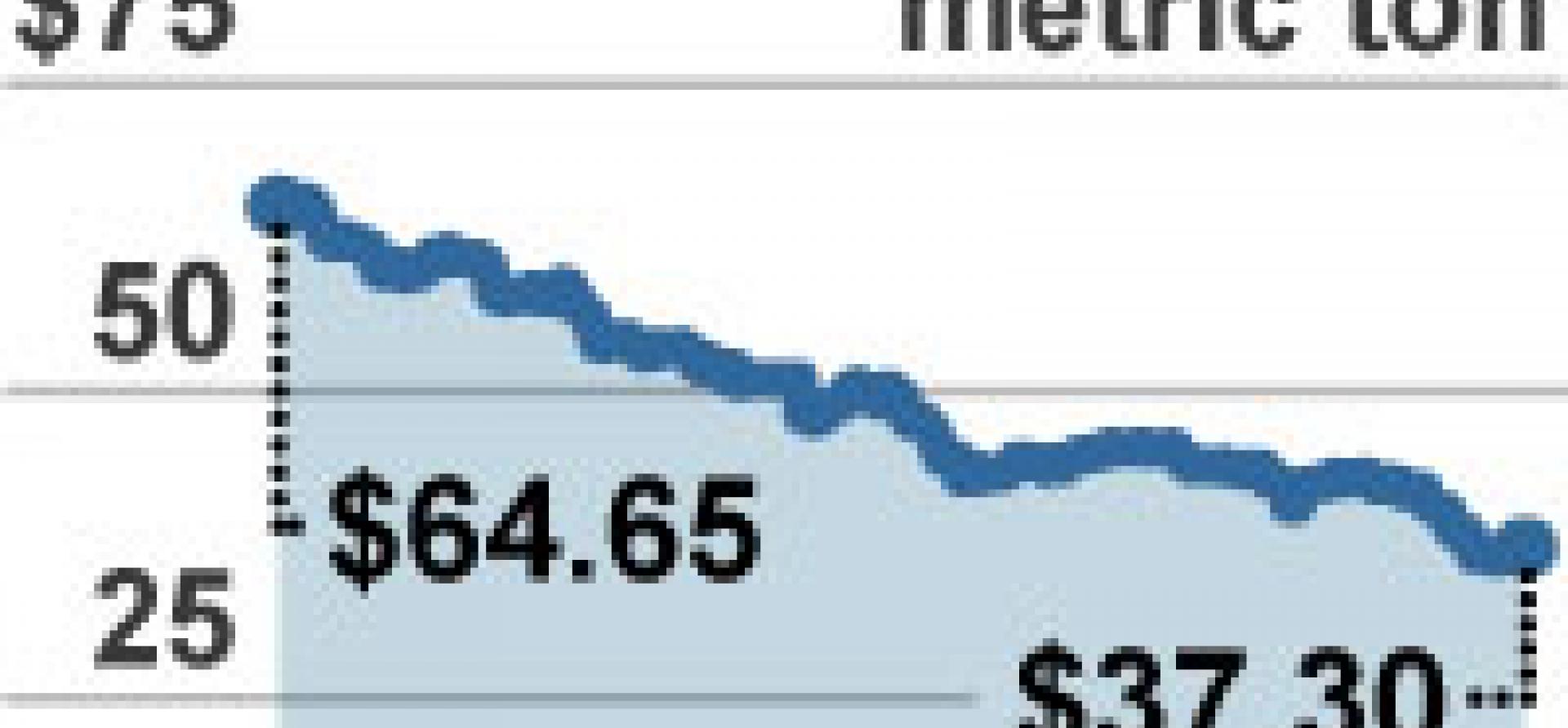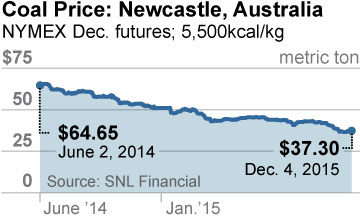The News From Newcastle: Coal Is in a Bind

The Port of Newcastle, the largest coal export port in the world, has reported that for the calendar year to November 2015, its coal exports were down 3 percent year over year to 98.4 million metric tons.
 This statistic alone brings into question the robust-growth coal industry storyline promulgated by Australia’s Bureau of Resources and Energy Economics, its Office of the Chief Economist, the New South Wales Minerals Council or the International Energy Agency (which is perhaps why BHP’s CEO suggested this past week in the Australian Financial Review that the IEA needs to be overhauled).
This statistic alone brings into question the robust-growth coal industry storyline promulgated by Australia’s Bureau of Resources and Energy Economics, its Office of the Chief Economist, the New South Wales Minerals Council or the International Energy Agency (which is perhaps why BHP’s CEO suggested this past week in the Australian Financial Review that the IEA needs to be overhauled).
Look further into the latest Newcastle numbers, and you find that coal exports from New South Wales to China were down 50 percent year on year. Newcastle coal shipments to Japan and Taiwan were up—but only marginally—and they were down for India, the second-biggest importer behind China.
Three other nuggets of note in the Platts report:
The price of Newcastle 6,000kcal export thermal coal price hit a decade low of US$50 per metric ton in November, and the forwards price has thermal coal below US$48 per metric ton out to 2021.- The price of Newcastle lower-energy, higher-ash 5,500kcal, thermal coal benchmark hit a decade low of US$38.60 per metric ton in November (down 20 percent in 2015). That’s well below the cash cost of production from Adani’s proposed Carmichael coal project.
- Despite declining export demand, the New South Wales Planning Assessment Commission has 50 million metric tons per year of new coal-production capacity on its planning books, even after the knock back of the Drayton South greenfield mine development (see our report from a few weeks ago “Anglo American’s Drayton South Coal Mine: A Likely Stranded Asset” explaining why that proposed project is commercially unviable).
Platts talks also of coal being in the depths of “winter,” with supply growing as demand remains unresponsive, as prices keep falling and as profit margins disappear. At IEEFA, we don’t see this perspective changing anytime soon.
Global coal markets have been in structural decline for some time already and there is no evidence of an emerging turnaround. The outcome of the climate summit in Paris, aka the Paris Effect, isn’t going to help, as industrial economies stand poised to agree to a new emissions-control treaty.
The stock prices of major coal-producing companies like Peabody Energy, Whitehaven Coal and Glencore are all at or near record low prices. The average listed U.S. Indonesian and Australian coal company dropped 5 percent just on Friday—while the Dow Jones Industrial Index rallied 2 percent.
Maybe the news from Paris is starting to sink in.
Tim Buckley is IEEFA’s director of energy finance studies, Australasia.















